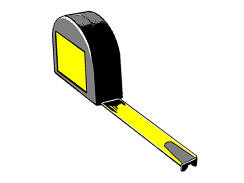Science and Innovation Minister Steven Joyce recently
announced that Callaghan Innovation will be the name of the new Advanced Technology Institute. The ATI is being set up by the Government to help firms in the high-tech manufacturing and services sectors. The new organisation will have operations in the Auckland, Wellington (including Hutt Valley) and Canterbury regions.
The legislation that will establish Callaghan Innovation is passing through the legislative process at the speed of light. It's only been a couple of months since the
First Reading. It is clearly high on the Government's agenda. I wonder how we can get similar treatment for the New Zealand Patents Bill?
Select Committee report
The Education and Science Committee recently
reported back on the Advanced Technology Institute Bill. The committee had the Bill referred to it on 13 September 2012. The closing date for submissions was 1 October 2012. They received and considered 23 submissions from interested groups and individuals. Seven of these submitters presented oral submissions.
Collaboration
There is a change recommended to the operating principles. Clause 14(1)(b) now requires Callaghan Innovation to "proactively engage
and collaborate with businesses, other [Research Science & Technology] providers, and other persons that ATI considers relevant to the performance of its functions". This amendment is to ensure that Callaghan Innovation works cooperatively with existing research facilities in order to avoid unnecessary duplication.
One of the functions of Callaghan Innovation is to provide services to businesses that contribute to its main objective. Clause 13(3)(a) is amended to include RS&T providers. An example of the way in which Callaghan Innovation can provide services to businesses now includes "undertaking research and development in collaboration with, or on behalf of, businesses
or RS&T providers (or both).
Net benefit
Clause 14(1)(a) requires that Callaghan Innovation "aim to ensure that any activities it undertakes are for the
net benefit of New Zealand". The word "net" is being taken out so that Callaghan Innovation is aligned with other entities such as Crown Research Institutes.
The term "benefit" is understood to be wide enough to include a range of benefits, such as economic, environmental, social, and cultural.
Conflict of interest
Clause 13(1)(f) states that one of the functions of Callaghan Innovation is to allocate and administer RS&T funding. Some submitters raised the potential conflict of Callaghan Innovation being both a funder and service provider.
Clause 14(2) is believed to address this issue. When allocating and administering RS&T funding, Callaghan Innovation must—
- act fairly and transparently
- implement systems and procedures to enable it to give effect to this principle
- make information about those systems and procedures available on its Internet site
- include in its annual report a report on its implementation of those systems and procedures.
Stakeholder advisory group
Clause 10 requires that, as far as practicable, the stakeholder advisory group's membership is broadly representative of the manufacturing sector, services sector, and RS&T providers. Furthermore, the members collectively should have sufficient experience and knowledge of the manufacturing sector, services sector, and as RS&T providers to give appropriate advice to the board.
One of the minority views is that clause 10 should make more explicit the need for strong industry representation on the stakeholder advisory group, and empower industry groups to have a say in their representation on this group. It was felt that union representation should be added to the clause.
However, this suggested change is not reflected in the Bill as reported back to the House.
The Second Reading
The Bill had a Second Reading on 8 November 2012. From the
Hansard record the debate looks like a rehash of the views expressed in the Select Committee report discussed above.
One of the minor parties wants to see a further amendment to the clause dealing with operating principles. Clause 14(1)(b) as already amended by the Committee requires Callaghan Innovation to "proactively engage
and collaborate with businesses, other [Research Science & Technology] providers, and other persons that ATI considers relevant to the performance of its functions".
The further amendment would require Callaghan Innovation to "proactively
identify, engage, and collaborate". The idea behind this amendment would be to ensure that one of the things Callaghan Innovation must do is first of all find out who is in the market, so that it can then go and engage and collaborate.
This amendment is now formally tabled in
Supplementary Order Paper No 149. Its author sees the role of Callaghan Innovation as 80 percent relationship building between business and research entities and 20 percent funding facilitation of research. There should be a requirement, according to the author, for Callaghan Innovation to know who is providing this service while not necessarily engaging with them in an attempt to address inadvertent duplication or competition.
Next steps
Now that the Second Reading is over it is time for the Committee of the whole House to consider the Bill part by part. It is high on the latest Order Paper. I think we can expect the legislation to be through the Parliamentary process before the Christmas break. That way all the legislation will be in place ready for a proposed launch date of 1 February 2013.
 I recently came across an interesting alert from the Honigman firm regarding patent term adjustment. On 1 November 20120 the Eastern District of Virginia issued the first court decision involving the United States Patent and Trademark Office (USPTO) calculation of patent term adjustment.
I recently came across an interesting alert from the Honigman firm regarding patent term adjustment. On 1 November 20120 the Eastern District of Virginia issued the first court decision involving the United States Patent and Trademark Office (USPTO) calculation of patent term adjustment.



